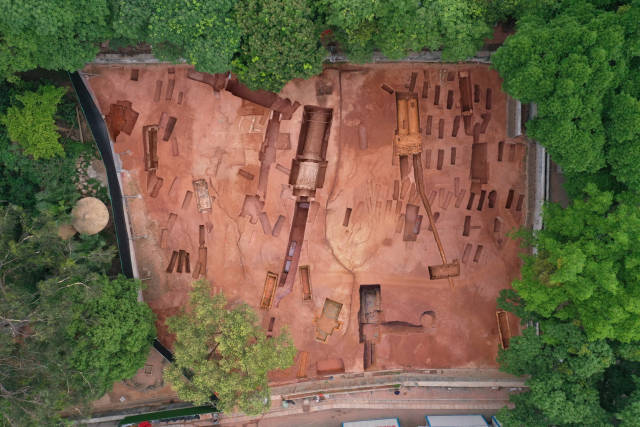
A three-month archaeological excavation at the Guangzhou Zoo has uncovered a trove of significant historical discoveries, according to a report from Nanfang Plus (南方+), the Chinese-language media outlet of the Nanfang Daily Media Group (南方报业传媒集团).
The zoo is located within Guangzhou’s "Xiaobei (小北) - Jianshe new village(建设新村) - Huaqiao new village (华侨新村) - Taihegang (太和岗) - Quzhuang (区庄) - Mayinggang (麻鹰岗) " underground relics zone, a key ancient tomb burial site.
Since 1956, more than 500 ancient tombs have been discovered during various construction activities at the zoo. In compliance with the Protection of Cultural Relics, the Guangzhou Institute of Cultural Relics and Archaeology recently conducted a survey of a 1,300-square-meter area to support the construction of the Mayinggang enclosure (麻鹰岗场馆).
READ MORE: Discoveries in Jiangsu shed light on life in canal-side sites
The latest excavation, approved by the National Cultural Heritage Administration, was carried out from April to July and uncovered 148 tombs from different historical periods.
The tombs include four Han Dynasty (202BC-220AD) tombs, eight Jin Dynasty (265-420) tombs, 15 Tang Dynasty (618-907) tombs, and 121 Ming (1368-1644) and Qing Dynasty (1644-1911) tombs.
A total of 196 artifacts were unearthed, including pottery, porcelain, bronze, jade, and jewelry. Noteworthy discoveries include an Eastern Han pottery house model, a Tang Dynasty pottery chicken model, and Qing Dynasty jade hairpins.
Especially interesting is a well-preserved Eastern Jin tomb, the largest and best-preserved of its kind in Guangzhou, and a Southern Dynasties couple’s tomb. These discoveries are crucial for understanding burial practices, architectural techniques, and historical customs in Guangzhou during these periods.
READ MORE: Archaeological findings expected to help improve understanding of vassal state
The Guangzhou Institute of Cultural Relics and Archaeology has engaged the public through educational tours in collaboration with Guangzhou Zoo, allowing visitors to learn about the significance of these archaeological activities. This initiative aims to enhance public awareness and appreciation of Guangzhou’s rich cultural heritage.
Translated by China Daily from the original report in Chinese as published on Southcn.com, the official website of Nanfang Daily Media Group.


